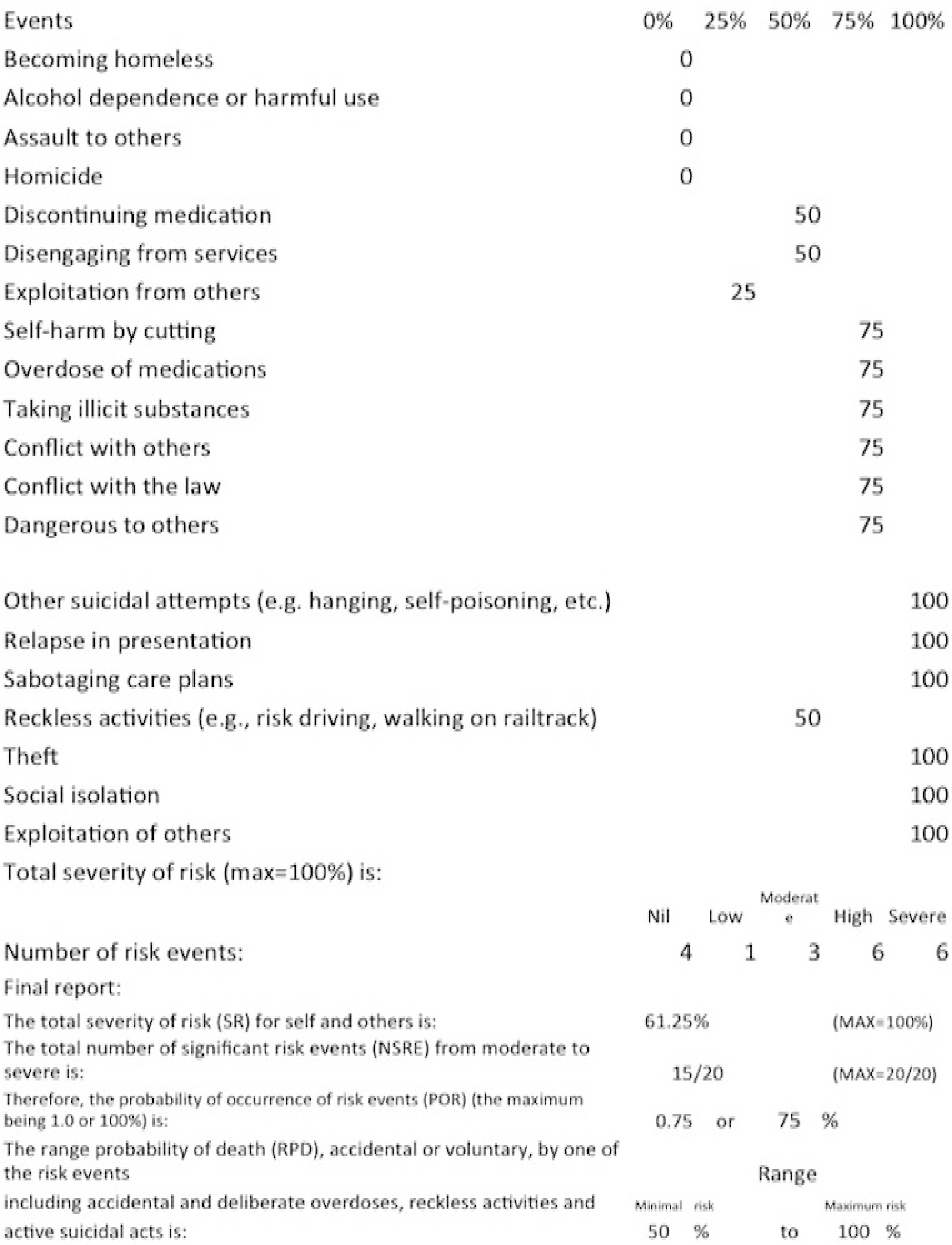Published online by Cambridge University Press: 23 March 2020
The aim of psychiatry is the prediction of risks.
Creation of the Psychiatric Risk Assessment Scale (PRAS) (Table 1).
To assess psychiatric inpatients for risk to self and others.
The PRAS comprises 20 risk items that rate five probabilities of occurrence: 0% (nil), 25% (low), 50% (moderate), 75% (high) and 100% (severe). Cut-off score indicates “moderate” risk = 50. The mathematical formulas for the risks are as follows:
– severity of risk (SR) = average for the whole table multiplied by %;
– number of significant risk events (NSRE) = count of risks scored from 50% to 100% divided by 20 (items);
– probability of occurrence of risks (POR = NSRE%);
– range probability of death (RPD) = range score of (overdose + suicide + reckless activities)%.
Two raters assessed independently n = 8 patients. Kappa inter-rater statistic was used by dichotomous results (above-below cut-off score).
Inter-rater Kappa = 0.60 indicates a moderate inter-rater agreement. In the sample, only 2 patients scored above the cut-off score of 50, indicating a level of moderate-to-severe risk. For the other patients, the average SR = 36%, indicating low-to-moderate risk.
PRAS is constantly used to assess the likelihood that the care provided to patients admitted to hospital is sufficient or whether major remedial action is required.
Table 1
The authors have not supplied their declaration of competing interest.
Comments
No Comments have been published for this article.